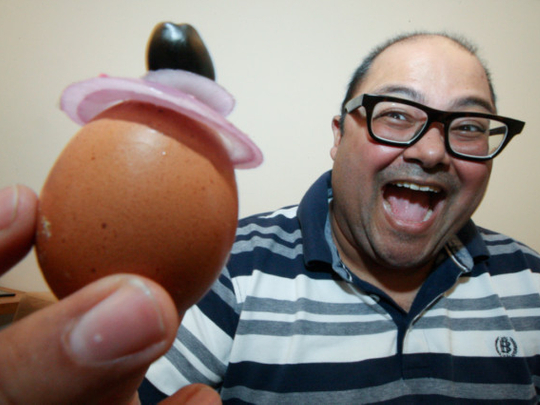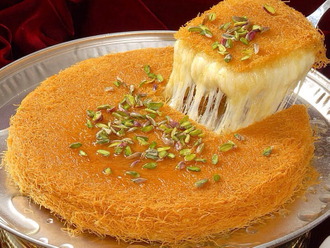
Bikramjit Ray may have dropped out of cooking school because it was “too difficult” but his love for it couldn’t keep him away from food. So he did the next best thing: he turned food writer and critic.
After having worked in leading Indian publications for several years, television became his medium. A known face on Indian channels such as CNN IBN and NDTV Good Times, Ray says all you need is a passion for food and the “ability to see right from the wrong” to be a food critic.
“What I mean is you have to be able to express yourself. You think something is right, you say it; you think something is wrong, you say it, doesn’t matter what 50 other people think. And thirdly, however much you may be buttered up you need to look through the bull****, which is very easy. However much the service is good, the staff polite and sweet talk you, bad food is bad food,” said Ray who was recently in Dubai.
“I have this critic friend who will talk about the décor and beautiful lamps and nothing about the food because it’s terrible. And if you read what a critic writes, you start understanding what he or she likes. For me food is very personal, it’s like religion.”
Ray believes the term “Indian food” is a misnomer.
“What you eat as ‘Indian food’ — butter chicken and daal makhani — is actually ‘shaadi ka khana’ (wedding fare) not ‘ghar ka khana’ (homemade, authentic food). It is a peculiar combination of what restaurant food used to be when Punjabis, such as Gulatis (a famous restaurant in Delhi) came to India in 1947. I’ve done a show on ‘refugee’ food. Chhole bhature (chick peas and fried bread) is not what you’ll call Delhi ka khana. It is Punjabi food. Before 1947, chhole bhature didn’t exist in Delhi. But now it’s one of the major street foods, an intrinsic part of Delhi. Similarly if you go to the UK, what they consider Indian food is from the 1950s and 1960s because that’s when they moved there.
“My show Secret Kitchen (which ran on CNN IBN) is all about ghar ka khana. I went into people’s homes and asked the grandma to cook the dish. That is food. I’m planning a new show which is going to be about food in restaurants but not so much about what is actually made but how people perceive Indian food and what is happening. How they are adapting a recipe. Everything that you eat has a mental image. It is all about your eyes, your ears, your tongue and the anticipation. Suppose you want to eat golgappas (deep fried puffed balls filled with boiled potatoes, peas or chick peas, sweet-sour tamarind chutney and a spicy concoction called jal jeera) you will watch the guy serving take one, break it open on top — khachaak — and I guarantee you can already feel the imli (tamarind) in your mouth. As an Indian you may know that but when a foreigner comes his mind just explodes because of the experience.
“We don’t just feed our stomach. When you are depressed, you eat daal-chawal (lentils and rice), with maybe a little bit of ghee (clarified butter). Why? Because it reminds you how you returned from school. It was rainy and cold and your mother sat you down, mixed them with her hand and fed you. You feel the warmth. That is why when a mother cooks for the child, the child automatically feels the mother is a great cook, when in actuality some of them are terrible cooks.”
On his first visit to the city Ray found it very interesting, food-wise. “I plan my holidays according to the food I’d like to eat. I’d rather spend $150 (Dh551)on a meal than on a room. Dubai hasn’t disappointed me. I did a food tour and experienced some really good food. I’ve been to the markets because I’ve been cooking for my family here. I’ve been able to get things here which I’ve been looking for a long time.
“What disappointed me was the lack of Emirati food. I went somewhere and was given a very off-handed answer like ‘Emiratis are very poor and don’t really have what they can call Emirati food’ — which is rubbish. I’ve had Indian, Iraqi, Syrian, Lebanese, Egyptian, Moroccan food here. It’s a country of immigrants. I see a lot of potential for a show in Dubai because there’s a lot of laughter, lots of people.”










